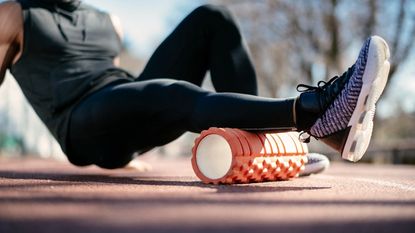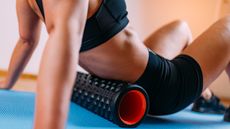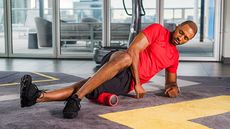Foam roller exercises have a whole host of benefits – it’s no wonder people are raving about them. They’re a fantastic way to speed up the recovery process after an intense session and can minimise muscle soreness. Complete these exercises after your next workout and you should find it much easier to get back to the gym the next day.
Foam rollers come in all shapes and sizes; some are smooth, some are bumpy and some come with additional vibrating features. Newbies might want to opt for a softer model, but those who are used to the self-massaging tools might prefer a firmer, more rigid option. Check out our guide to the best foam rollers to find one that suits your needs.
Want something that will do all the massaging work for you? Opt for one of the best massage guns instead – but be prepared to pay a lot more. We’ve outlined the benefits of both products in our detailed foam roller vs massage gun piece.
Below, we’ll dig into the benefits of foam rolling to understand why it’s worth including in your self-care routine. We’ll also ask the experts to walk you through simple foam roller exercises to aid recovery.
Benefits of foam rolling
When it comes to foam roller exercises, there are plenty of benefits to enjoy. Foam rollers are essentially a self-massage tool that help to make everyday movement more comfortable. Plus, you can work out without lingering soreness limiting your performance.
So how do foam roller exercises accelerate recovery? Autumn Sahar, personal trainer and brand ambassador for Core Balance, says that using a foam roller after exercising helps to release tension from sore muscles. “This loosens knots and breaks down lactic acid formed following a workout,” she explains. “By stimulating blood flow, the oxygen supplied to the muscles significantly increases, leading to reduced delayed onset muscle soreness the next day.”
To get the best results, Abi Smith, rehab and pilates physiotherapist at Six Physio, recommends making foam rolling part of a holistic approach to your wellbeing. “The key is to prioritise a good night’s sleep, adequate rest and good nutrition,” she says.
Foam roller exercises
Ready to roll? Autumn recommends the following exercises to take your post-workout recovery to the next level. “Each exercise should be performed for a couple of minutes,” she says. ‘It can be useful to take deep, slow breaths to manage painful areas while rolling.”
If you’ve not quite got to grips with your foam roller, check out our guide on how to use a foam roller for even more expert advice.
How to foam roll quads
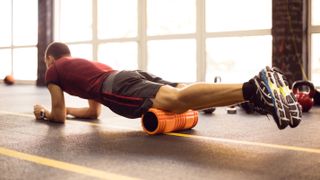
- Start by facing the floor in a forearm plank position with the roller under your quads.
- Brace your core and balance yourself using your arms. Slowly move down the roller and back up to work the full quad. Be sure to keep most of your weight on the quad rather than your hands to maximise your massage.
How to foam roll hamstrings
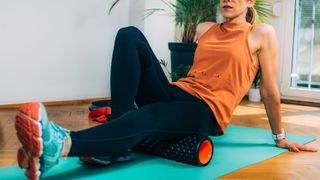
- Start by sitting on the floor with extended legs and place the roller underneath your hamstring.
- Lift your bottom so your weight is fully resting on the roller, using your hands to support yourself.
- Roll slowly up and down the roller between your knee and glutes.
How to foam roll calves
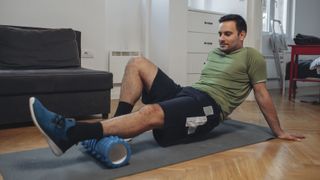
- Start by sitting on the floor with your legs extended and the foam roller underneath your calf.
- Lift your bottom and place your weight on the calf. Put your hands behind yourself for support.
- Take turns to slowly roll each calf from the ankle to just below the knee.
How to foam roll back

- Begin by lying on your back with the foam roller positioned under your upper back. Bend your knees to help you balance. Cross your arms across your front so each hand is trying to reach the opposite side of your body.
- Brace your core and slowly roll up and down from your lower back to the bottom.
How to foam roll glutes

- Begin sitting on the foam roller with your hands placed behind you for support.
- Slowly roll from the top of the glute to the lower glute.
- Once complete on one side, repeat on the other.
For best results, consistency is key. Be sure to practise these foam roller exercises regularly - you’ll thank yourself when it comes to your next workout.
